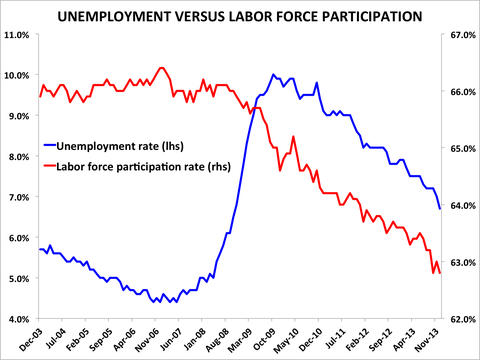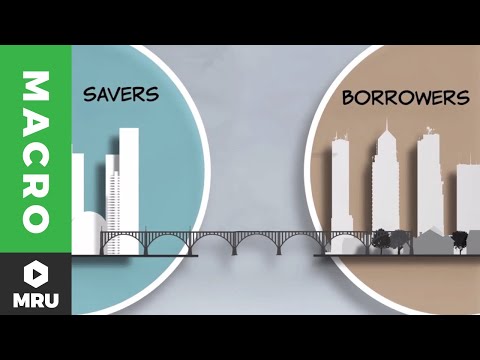

Commonly, it will be paid within 12 months from the year-end of financial statements, and it is not generally more than that. Therefore, salary expenses are not classified as a non-current liability unless there is an agreement between the company and staff that the salary expenses are paid within more than 12 months. As of the reporting date, the unpaid amount, which will be paid in more than 12 months from that date, is classified as non-current liabilities. Examples of expenses include office supplies, rent, utilities, employee payroll, or anything else that needs to be paid so your company can stay in business. If any of these payments are delayed because you are offered credit from a provider, then the line item shifts from an expense to a liability. The simplest way to see the difference between these categories is by looking at how you pay for something that is needed for your business.
What Is Sovereign Debt? – International Monetary Fund
What Is Sovereign Debt?.
Posted: Thu, 01 Dec 2022 16:26:50 GMT [source]
This information is separately reported, so that investors, creditors, and lenders can gain a better understanding of the obligations that a business has taken on. These obligations are usually some form of debt; if so, the terms of the debt agreements are typically included in the disclosures that accompany the financial statements. Deferred tax liabilities, deferred compensation, and pension obligations may also be included in this classification. Long-term liabilities are the debts or financial obligations that a company expects to pay over a period of more than one year. These can include loans, bonds, and other types of debt that have maturities beyond 12 months from the date of the balance sheet. An example of a long-term liability is a mortgage loan taken out by a company to purchase property for its operations or investment purposes.
Commercial paper is also a short-term debt instrument issued by a company. The debt is unsecured and is typically used to finance short-term or current liabilities such as accounts payables or to buy inventory. Typically, vendors provide terms of 15, 30, or 45 days for a customer to pay, meaning the buyer receives the supplies but can pay for them at a later date.
Example of Current Liabilities
Long-https://1investing.in/ liability refers to any obligation or debt that extends beyond a year and is not expected to be paid off within the next 12 months. These liabilities can include loans, bonds, mortgages, lease agreements, deferred tax liabilities and pension obligations. Long-term liabilities are recorded on the balance sheet of a company or organization as they represent financial commitments that must be met over an extended period of time. It is important for businesses to understand their long-term liabilities and manage them effectively in order to maintain financial stability and ensure future success.

By managing long-term liabilities and taking steps to reduce the debt, businesses can save in taxes and help maintain their balance sheet stability. In short, a company needs to generate enough revenue and cash in the short term to cover its current liabilities. As a result, many financial ratios use current liabilities in their calculations to determine how well or how long a company is paying them down. The liabilities definition in financial accounting is a business’s financial responsibilities.
Easier Accounting Blog l
Here, the lessee agrees to make a periodic lease payment to the lessor. Read on as we take a closer look at everything to do with these types of liabilities, such as how you calculate them, how they’re used, and give you some examples. There are several different types of liabilities that will last varying times. Increased interest costs, as the company will have to pay interests on all loans. Decreased flexibility as the borrower will have to allocate more funds to make the loan repayment.
What Are Retained Earnings? Formula, Examples and More … – Entrepreneur
What Are Retained Earnings? Formula, Examples and More ….
Posted: Sat, 07 Jan 2023 08:00:00 GMT [source]
Financing liabilities, by contrast, are obligations that result from actions on the part of a company to raise cash. A liability’s classification as current or long-term is used to provide information about the company’s liquidity and the ability to repay debts when they are due. Current liabilities represent a more immediate need for cash and a company should have resources available to repay current liabilities to be considered in good financial health. Long-term liabilities represent debts the company has more time to repay, or arrange alternative options, such as refinancing to push out the time needed to produce cash to repay the liability.
Premium Investing Services
That’s because these debits and credits enable companies to reap immediate benefit now and pay later. For example, by borrowing debt that are due in 5-10 years, companies immediately receive the debt proceeds. Note that not all short-term debt comes with a low-interest rate.

One of the current liabilities examples is money owed to suppliers in the form of accounts payable. On a company’s financial statements, liabilities are listed in the column on the right starting with current liabilities and followed by long-term liabilities. Understanding this breakout between current and long-term can help the reader of financial statements better understand the company’s ability to repay debts and measure its liquidity.
The long-term liabilities help the users to understand the financial health of the company. The below graph provides us with the details of how risky these long-term liabilities are to the investors. Deferred Tax, Other Liabilities on the balance sheet, and Long-term Provision have, however, decreased by 2.4%, 2.23%, and 5.03%, suggesting the operations have improved on a YoY basis.
In essence, it is required for two conditions to be met before liability can be regarded as contingent. These conditions are the fact that the outcome is probable and that the liability amount can reasonably be estimated . If one of these conditions is not met or satisfied, then a company will not record a contingent liability on the balance sheet. A company should, however, disclose this item in a footnote of the financial statements. In order to avoid default, accounts payable must be paid off within a given period.
Current Liabilities: What They Are and How to Calculate Them – Investopedia
Current Liabilities: What They Are and How to Calculate Them.
Posted: Thu, 10 Mar 2022 08:00:00 GMT [source]
The ownership of such an asset is generally taken back by the owner after the lease term expiration. Debentures are generally issued with a longer time to maturity and at lower interest rates as compared to other types of debt. Special Purpose VehiclesA Special Purpose Vehicle is a separate legal entity created by a company for a single, well-defined, and specific lawful purpose. It also serves as the main parent company’s bankruptcy-remote and has its own assets and liabilities. Finance LeasesFinance lease simply refers to a method of providing finance in which the leasing company purchases the asset on behalf of the user and rents it to him for a set period of time. The leasing company is referred to as the lessor, and the user is referred to as the lessee.
A cordial relationship exists between the supplier and the carpenter and with this, the former allowed the latter to buy on credit. The supplier then gives an invoice for the doors that he has to pay within 30 days. The amount that the carpenter owes for these doors is a liability for the carpenter, that is, he must meet this financial obligation within the stipulated period. The liabilities that a company undertakes should theoretically be offset by the value creation from the utilization of the assets that are purchased. Alongside the shareholders’ equity section, the liabilities section is one of the two major sources of a company’s funding.
Why Are Current Liabilities Important to Investors?
At the corporate level, accounts payable are short-term payments that are due to suppliers. This payable is essentially a short-term IOU from one business entity to another. The other party or entity will record that transaction as an increase to its accounts receivable in the same amount. Debentures can serve as a financing option for entrepreneurs that do not want to give up share value or for firms that are fast-growing and do not have a lot of assets. They are a form of debt capital and are recorded as debt on the issuing company’s balance sheet. It is a legal certificate stating the amount of money that the investor gave, the interest rate to be paid, and the schedule of payments.

Overdraft credit lines for bank accounts and other short-term advances from a financial institution might be recorded as separate line items, but are short-term debts. The current portion of long-term debt due within the next year is also listed as a current liability. Analyzing current liabilities is of relevance to investors and creditors. For example, banks want to know this before extending credit whether a company is collecting or getting paid for its accounts receivables timely.
The type of debt you incur is important, says Dana Anspach, a certified financial planner and founder of Sensible Money LLC in Scottsdale, Arizona. Certain liabilities can actually help increase your net worth over time. For example, student loans finance your education and might lead to a higher paying job. Others, such as credit card debt racked up from buying clothes and dining out, aren’t going to add to your net worth. Another common example of a long-term liability is bonds issued by companies or governments.
- Simply put, a business should have enough assets to pay off its debt.
- She plans on paying off the laptop in the near future, probably within the next 3 months.
- During the month, USD5,000 is paid against the previous month’s salary.
- Still the long-term investment must be sufficient to cover the debt.
- These include white papers, government data, original reporting, and interviews with industry experts.
- The only insight you had for future obligations was limited to the maturity analysis in the disclosure report.
When the terms of a loan — or any other legally binding financial obligation — give you more than one year to repay it, it’s considered a long-term liability. As with current liabilities, long-term liabilities are also recorded on your business’s balance sheet. The only real difference is that current liabilities have a repayment rate of less than one year, whereas long-term liabilities have a repayment date of longer than one year.
- A long-term liability refers to any debt or obligation that will be due beyond the next 12 months.
- Many companies rent office space or equipment on leases that span multiple years.
- These are payments the company received from customers for products and services the company won’t provide within one year.
- Taking out a long-term loan and immediately attaining capital will be beneficial when you take on the debt.
These liabilities can fall in the short term category , or the long term category . Loans – When a company borrows money, the loan is recorded as a long-term liability. Loans may be taken out from banks, other financial institutions, or even individuals.